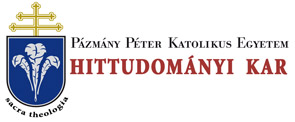Folia Theologica et Canonica 5. 27/19 (2016)
RECENSIONS
268 RECENSIONS SzuROMi, Sz. A., Az 1545 előtti egyházi források hatása a modern kánonjog rendszerére (Bibliotheca Instituti Postgradualis Iuris Canonici Universitatis Catholicae de Petro Pázmány nominatae III/19), Szent István Társulat. Budapest 2016, pp. 279 “The essential stable contents of canon law is (...) a well-organized promotion — in institutionalized form — of the primary goal of the Church, established by Jesus Christ, which is the salvation of souls. It contains: 1 ) the authentic presentation of the principles of the divine revelation; 2) norms of administration of those sacraments and sacramentáis which transmit concrete graces; 3) conservation of the work of the hierarchical community which has been entrusted on the Apostles. Therefore, the canon law means that crystallized disciplinary system which serves the saved human being to get to the salvation. Nevertheless, to fulfill this goal is necessary to analyze and interpret - as detailed as possible- those canonical regulations which have built upon each another from the establishment of the Church.” Szabolcs Anzelm Szuromi, O.Praem. - President of the Catholic University of Budapest - summarizes by these words his newly published volume, which is dedicated to the description of the disciplinary system of the Catholic Church which had been setting already before the Council of Trent, by those doctrinal and disciplinary statements and prescriptions which were composed from the beginning of the Church and had formed a clear internal structure and very strict interaction within the ecclesiastical norm system, defining even the meaning and principles of the current contents of the Church's discipline. Prof. Szuromi analyzes for this - beside the source- and institutional historical explanation (including the development of administration of the sacraments) - the day to day life of the Church and the original - contemporary - meaning of those technical terms, regulations, customs, etc. which still define the Church’s doctrinal and disciplinary activity. The author has summarized in this new volume his institutional- and source historical researches which he had done in the last five years regarding the living law of the Church. The work is arranged into twelve chapters, which follow the structure of the current Code of Canon Law by their themes. The rich material contains a precise summary of the relation of the earlier canonical sources and the current ecclesiastical discipline (pp. 17-39); the process and effect of the Latin codifications (pp. 40-58); the normative changes within the institutional function of the offices of patriarchs and primates from historical prospective (pp. 59-75); comments on the rules of administering of baptism, based on disciplinary, dogmatic theological and liturgical sources (pp. 76-96); enlightening the nature of the current liturgical rules regarding the celebration of the Holy Eucharist, with particular attention to the current canonical regulations and their sourceand institutional historical back (pp. 97-120); the original canonical sources of the current Latin ecclesiastical disciplinary system regarding mixed marriages
